Differences Between Alibaba & Amazon
The main difference between Alibaba and Amazon is the audience – while Amazon serves consumers, Alibaba serves businesses. Amazon does have a B2B marketplace called Amazon Business, but it’s mostly known for its consumer offerings.
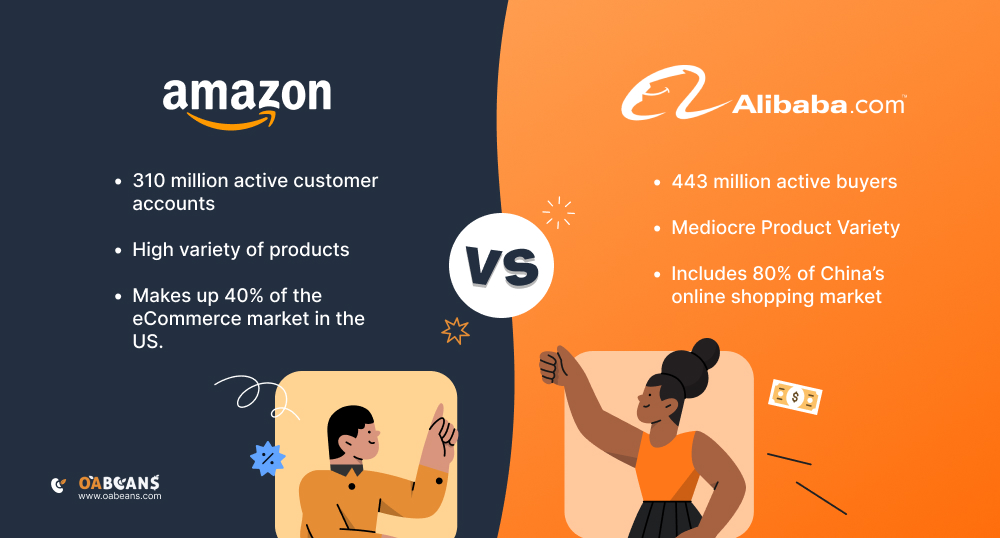
With over 80% of China’s online shopping market, Alibaba is one of the biggest eCommerce companies in this country. It has several shopping sites for different markets of customers, including Alibaba.com, AliExpress, and Taobao. On the other hand, Amazon is another eCommerce giant that serves customers around the globe. This company currently makes up 40% of the eCommerce market in the US.
But other than the audience and market share, what are the key Amazon Alibaba business model differences? Let’s find out below:
1) User Base
As a platform known worldwide for many years, Amazon hosts more than 310 million active customer accounts which continues to increase daily. However, due to Alibaba’s significant global growth, it was estimated to have approximately 945 million active buyers, a slight increase from the previous year. This is mainly because China still holds the largest user base worldwide.
2) Sales and Net Profit
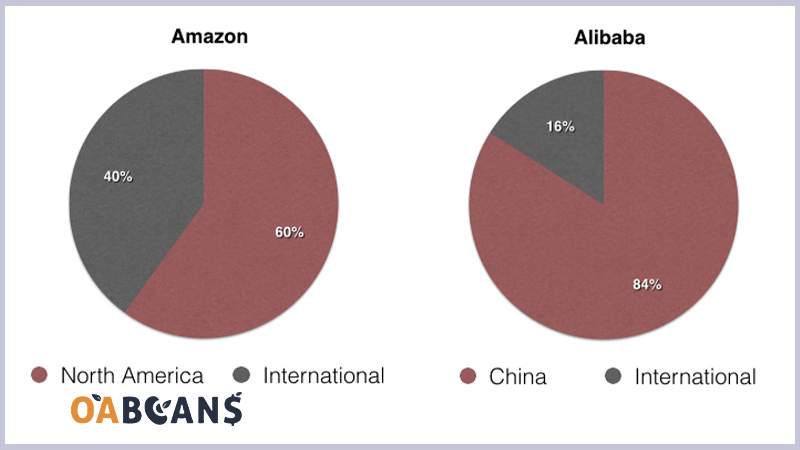
In Q2 FY 2025, Amazon projected net sales between \$159–164 billion, showing a 7–11% year-over-year increase. In contrast, Alibaba reported annual revenue of RMB 996.3 billion (approximately \$137.3 billion), marking a 6% year-over-year growth. While Amazon maintains a clear lead in sales volume, Alibaba continues to demonstrate stable growth and resilience in its home market, highlighting the different operational focuses and regional dynamics of the two e-commerce giants.
3) Variety of Products
Regarding the catalog that these two platforms manage, Amazon has the lead compared to Alibaba. It is a much more varied service and, therefore, it has been classified as “the everything store”. This means that users will be able to find an endless number of products that are not even available on the Asian platform.
4) Revenue Model Analysis
In Q2 FY 2025, Amazon projected net sales between \$159–164 billion, showing a 7–11% year-over-year increase. In contrast, Alibaba reported annual revenue of RMB 996.3 billion (approximately \$137.3 billion), marking a 6% year-over-year growth.
Since its early years up to 2025, Amazon has run a heavy asset model, which means it owns key elements like its delivery system and product inventory. This company makes money in 4 main ways:
- One is direct sales from its own warehouses to customers.
- Second one is its third-party marketplace, where Amazon earns fees and commissions from outside sellers using the platform.
- The third revenue stream is Amazon Prime, a popular membership service that offers streaming movies and exclusive discounts. Millions of users around the world are subscribed to it.
- The last major source of income is Amazon Web Services(AWS). Although it brings in less revenue than retail, AWS generates more profit for Amazon
In terms of business structure, Amazon mainly focuses on B2C (Business to Consumer) through Amazon.com. However, it also has a separate B2B arm called Amazon Business, which serves enterprise customers and bulk buyers.
In contrast, Alibaba follows a different strategy. The company does not own warehouses; instead, it works as a platform that connects buyers and sellers. Also, its business model is more layered. Alibaba combines B2B (Alibaba.com), B2C (Tmall) and C2C (Taobao) operations that help the company serve different types of customers, from manufacturers and retailers to individual consumers.
Another revenue model for Alibaba comes from fees that sellers pay to list their products and to run advertising on these platforms, also has its online payment service called Alipay, which offers microloans and other digital financial services. Additionally, it owns international platforms like AliExpress and Lazada, helping global buyers and sellers connect.
|
Revenue Stream |
Amazon |
Alibaba |
|
Direct Retail Sales |
Yes |
No |
|
Third-Party Seller Services |
Charges commission and service fees to sellers |
Charges for ads, visibility and seller services |
|
Subscription Services |
Amazon Prime (monthly/yearly) with shipping and media benefits |
– |
|
Digital Products |
Kindle devices, e-books, apps |
Some video services via platforms like Youku |
|
Financial Services |
Limited (Amazon Pay, some installment options) |
Major revenue sources( Alipay, micro-lending, digital payments) |
|
Cloud Computing |
A significant share of operating profits(AWS ) |
Growing but smaller than AWS |
|
Business Model Structure |
Mainly B2C via Amazon.com; also B2B through Amazon Business |
Multi-layered: B2C (Tmall) C2C (Taobao) |
Similarities Between Alibaba and Amazon
Although there are many differences between Alibaba vs. Amazon, the two marketplaces have quite a bit in common. While their market shares may be different (40.9% of all US eCommerce sales for Amazon, and the Chinese e-commerce corporation Alibaba Group recorded a revenue of around 449.8 billion yuan in Chinese online sales), they both dominate their country of origin.
In addition, both marketplaces have proprietary payment systems – there is Amazon Pay which allows users to purchase items on other websites using their Amazon accounts. Alibaba has created the same system through Alipay, with more than 700 million annual active users employing it.
Pros & Cons of Selling on Amazon
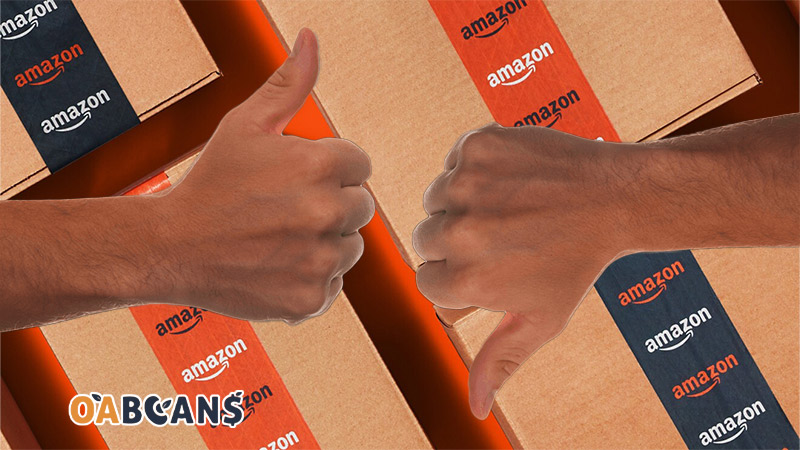
It is important to know the pros and cons of selling on Amazon so that you can make the right decision that best suits your needs.
Advantages of Selling on Amazon
- If you do not have a website and want to start an online business, it is an excellent alternative, since you will have coordinated inventory management and you do not need knowledge of web development or maintenance.
- You get more sales than if you start on a new website as long as you meet all the requirements and have a niche product because Amazon’s positioning is strong.
- If you already have experience in online sales, you can try Amazon FBA. This allows you to send your inventory to an Amazon distribution center and not worry about the logistics in terms of shipments, deliveries, customer service, and returns management.
- Accounts have access to payment gateways, which is difficult to access for a small business. there is also the opportunity for alibaba to amazon fba, which means a collaboration with Alibaba suppliers to sell their products on Amazon.
Disadvantages of Selling on Amazon
- The customers are Amazon’s, not yours, which limits the applicable strategies.
- Amazon has 1.9 million active sellers not only in the US but also in other countries. This makes it a highly competitive space for sellers.
- Amazon has high commissions that can go from 8% to 15% per item, therefore you must offer a product with a high margin.
Pros & Cons of Selling on Alibaba
When comparing Alibaba vs. Amazon, it’s important to know both companies’ pros and cons to make an informed decision. Selling on Amazon vs Alibaba 2025 has its own advantages and challenges, including:
Advantages of Selling on Alibaba
- High traffic (more than 20 million active users)
- Marketing tools to increase sales (SEO improvement, branding customization on your storefront, PPC)
- Especially effective for larger stores (Alibaba gives more exposure to stores with more products)
- Tools that facilitate the process of uploading products (you can upload products in bulk and Alibaba’s “Intelligent Posting” system will suggest ways you can optimize listings to perform better according to Alibaba’s algorithm and buyers’ searches )
Disadvantages of Selling on Alibaba
- As in all marketplaces, it is not possible to send the data to another eCommerce platform, so you will have to enter the data manually.
- There are more than 150,000 verified sellers on Alibaba, which makes it highly competitive for new sellers.
- Translations can be improved.
- To sell on Alibaba, you will have to choose between one of their subscription plans. These subscription plans cost around $3,000 to $22,000 per year.
Selling Fees on Amazon & Alibaba
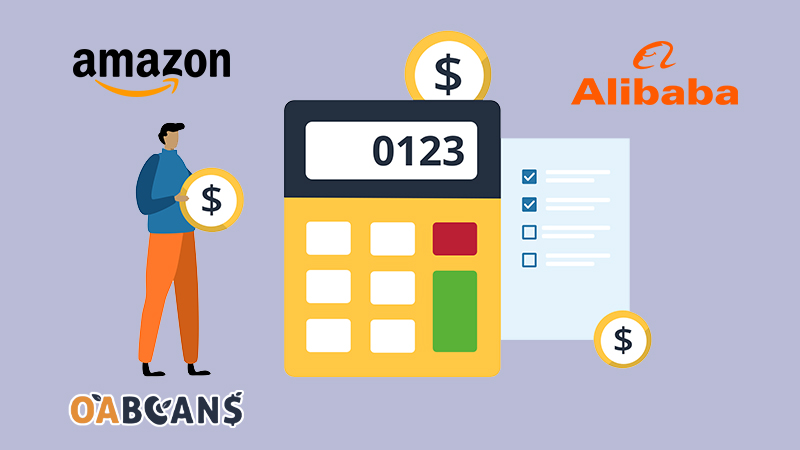
The next key aspect of comparing Amazon vs Alibaba 2025 is their selling fees. Regardless of the marketplace you choose, there are some fees and commissions you must consider. For example, Alibaba offers two types of plans for sellers: The basic plan ($2396/year) and the Verified Supplier plan ($21,999/year). These plans come with various features such as posting products, receiving and responding to queries, data reporting, etc.
Amazon also offers two types of seller plans: the Individual plan ($0.99 per item sold) which limits sellers to a maximum of 40 units a month, and the Professional plan ($39.99 per month) which does not have any limitations. Amazon Prime in the U.S. costs $14.99/month or $139/year, with 50% discounts available for students, young adults (ages 18–24), and qualifying government assistance recipients. Benefits include free shipping, exclusive deals, and more.However, on top of these amazon selling fees, there are additional costs and commissions you must pay as a seller. Some of these fees include closing fees (avg. $1.80), referral fees (6% to 96%), shipping fees ($3.99 to $46.50 per order), and storage fees ($0.69 to $3.40 per cubic foot per month). You can get a better estimation of your costs if you visit the Amazon website.
Shipping & Fulfillment on Amazon and Alibaba
Amazon owns and controls most parts of its delivery system, including over 175 fulfillment centers that are equipped with advanced machines and robots. It also operates Amazon Air, its own cargo airline, to help with faster and more coordinated deliveries. this service has continued to expand and modernize through 2025 to meet growing global demand.
Sellers on Amazon can choose between two options:
- FBM (Fulfilled by Merchant): where sellers pack and ship items themselves
- FBA (Fulfilled by Amazon): where Amazon handles everything—including storing, packaging, shipping, customer service, and returns.
To make the process smooth and make more profits, learn how to ship to amazon fba.
Alibaba does not own warehouses or manage delivery directly; instead, it uses a separate company called Cainiao to handle logistics. Sellers on Alibaba platforms (like Taobao, Tmall, or Alibaba.com) are responsible for storing and shipping their own products. Cainiao supports fast deliveries inside China as well as international shipping to other countries.
Global Reach and Consumer Trust
Amazon is one of the most trusted and dominant e-commerce platforms in 2025 in developed countries such as the U.S., Canada and Europe. One of the main reasons for Amazon’s success is its fast delivery, strong customer service, and popular Prime membership. It mainly targets well-established markets with high purchasing power. Also, because of its strong brand reputation, clear return policies, fast refunds, and reliable support, many buyers feel confident purchasing from Amazon. This trust helps Amazon attract customers from all around the world.
As you see in the comparison chart featured on amz.ninja, Alibaba focuses more on developing markets, especially in Asia. The company dominates e-commerce in China and operates major platforms such as Taobao, Tmall, and Lazada, serving over 130 million customers across Southeast Asia.
However, when it comes to international trust, especially compared to Amazon, Alibaba still faces challenges. Platforms like AliExpress sometimes struggle with issues like long shipping times or unclear return processes. While Alibaba is working to improve its reliability and global image in 2025, Amazon remains at the top of the list when it comes to trusted e-commerce platforms worldwide.
Listing Products on Amazon vs. Alibaba
Listing products on Alibaba vs. Amazon are pretty similar. You have to create a seller account first. On Amazon, if your product is already listed, you can add it to the existing listing. You can do this by searching for the product name or ID. However, if the product is not already listed on the platform, you must create a new listing using attractive descriptions and relevant keywords.
The process is pretty much the same for Alibaba, but here, the number of products you list plays a vital role in your success as a seller. The more products you have, the more likely you are to show up in product search results, which can lead to more exposure and a higher chance of securing partners.
Amazon and Alibaba in 2025: What’s Changed? (New policies and rules)
In 2025, both Amazon and Alibaba have gone through major changes when it comes to their updates. For an easy comparison between the e-commerce platforms in 2025, here’s what a seller, or someone planning to be one, must take note of.
The new Amazon Rules for 2025 are as follows:
1- changed how things work for sellers:
- Starting June 29, 2025, Seller Fulfilled Prime (SFP) comes with some new rules. If you go through the method of fulfilling orders on your own, you will have less time to deliver and stricter delivery criteria that require you to use the Amazon Tool to avoid late penalties.
- From April 30, 2025, Low-Cost Store has been renamed as Amazon Haul. It is available in more countries, thereby increasing the distribution reach of your product.
- Remote Fulfillment with Returns arrives at Mexico and Brazil now with credit, which benefits the FBA sellers.
2- Ad rules are stricter:
- Clean, pure, and simple product description.
- Proper targeting without false claims.
- Continual usage of Amazon performance tracking.
3- Seller ratings will be under bigger scrutiny:
- It will be the kind that needs to offer fast shipping and helpful support.
Alibaba has changed a lot, too:
1- The app for Shopify is gone. Now you link your store via the web using their Dropshipping Center.
2- Shipping has become faster, i.e., now 5 to 7-day delivery to more than 14 countries through UPS and FedEx.
3- Filters have been introduced in order to help you find items with no minimum order, private labeling, etc.
4- As of May 2, 2025, all Alibaba-imported goods are subject to tax.
Final Thoughts
Now that you know the differences between Selling on Amazon vs Alibaba 2025, you can make a more informed decision about which one suits your business more. One tip we can give you is to focus on the platform where you’re more likely to reach your target audience, whether it’s individual customers or other businesses. You must also consider fulfillment methods and the costs of selling on both marketplaces. By doing this, you can start a profitable – and potentially international – online business.
FAQs
Can I buy from Alibaba and resell on Amazon FBA without violating any policies?
Yes, you can resell Alibaba-sourced products on Amazon FBA as long as they meet Amazon’s compliance standards and don’t infringe on trademarks, patents, or safety regulations.
What are the main risks of sourcing products from Alibaba for Amazon private label?
Risks include poor product quality, mislabeling, long lead times, and the chance of selling generic goods that already face high competition on Amazon.
Why is Alibaba usually cheaper than Amazon even for the same products?
Alibaba connects you directly to manufacturers with wholesale pricing, while Amazon includes shipping, warehousing, marketing, and seller markup costs.
Is it better to dropship from Alibaba or fulfill with Amazon FBA?
Amazon FBA is faster and more reliable for customer satisfaction, while dropshipping from Alibaba often leads to slow delivery and lower conversion rates due to long shipping times.
Do Amazon sellers reveal their Alibaba suppliers or keep them private?
Most Amazon sellers keep supplier info confidential to protect their product margins and prevent competition from replicating their listings.
How can I verify if a product on Alibaba is already oversaturated on Amazon?
Use tools like Helium 10, Jungle Scout, or Keepa to check sales volume, review count, and price competition on Amazon before importing any Alibaba product.
Is it legal to rebrand Alibaba products and sell them on Amazon US marketplace?
Yes, rebranding (white labeling) is legal if the product is generic and doesn’t violate any trademarks or require special certifications under Amazon’s policies.
What’s the minimum order quantity (MOQ) difference between Amazon wholesalers and Alibaba suppliers?
Alibaba suppliers often require MOQs of 100–500 units, while Amazon wholesalers typically allow smaller quantities but at higher per-unit prices.
How do shipping times from Alibaba compare to Amazon FBA delivery times?
Alibaba shipping (especially sea freight) can take 20–45 days, while Amazon FBA offers 2-day delivery via Prime once inventory is received at the fulfillment center.
Why do Amazon buyers pay more when similar products exist cheaper on Alibaba?
Amazon offers faster delivery, buyer protection, customer service, and local warehousing—features that justify the higher price compared to Alibaba.



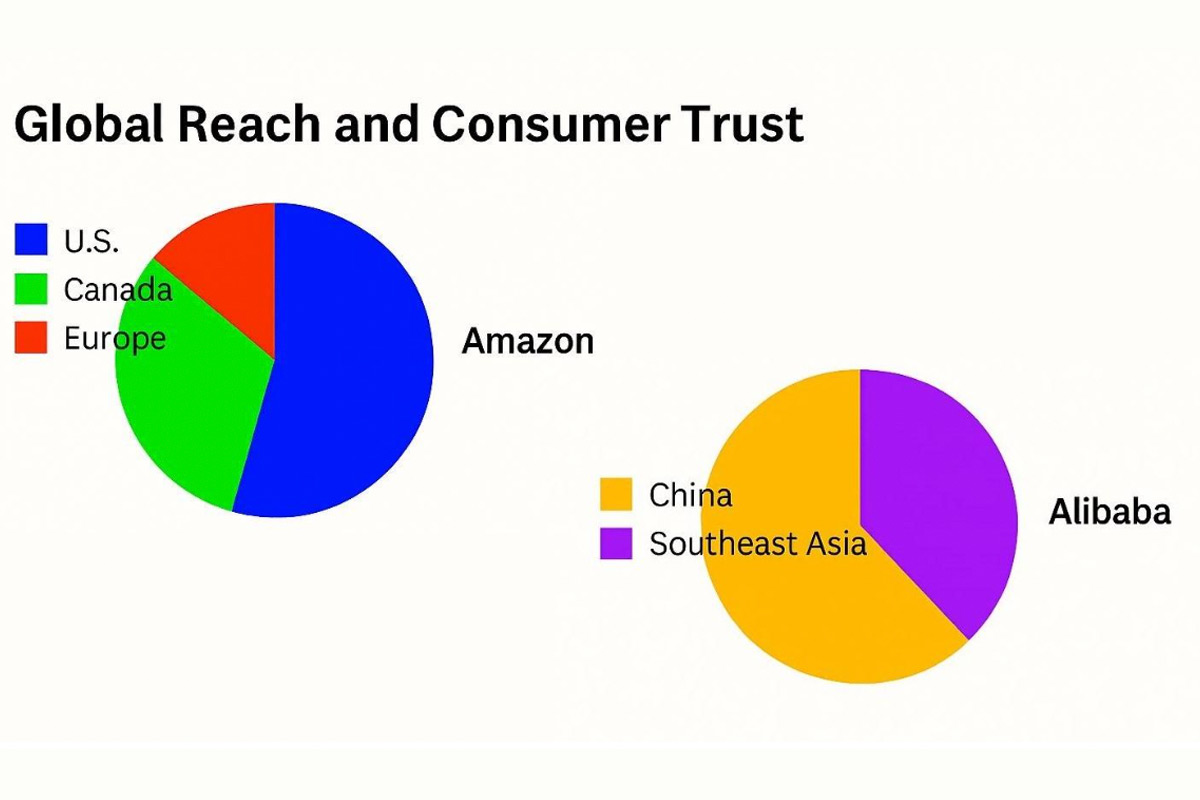
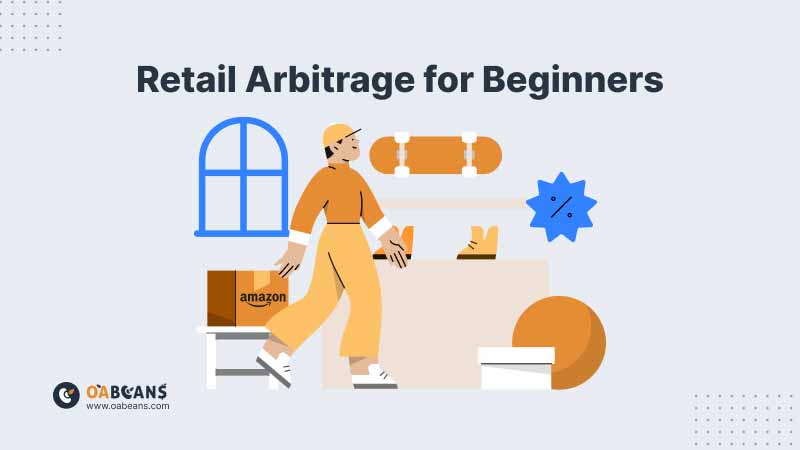
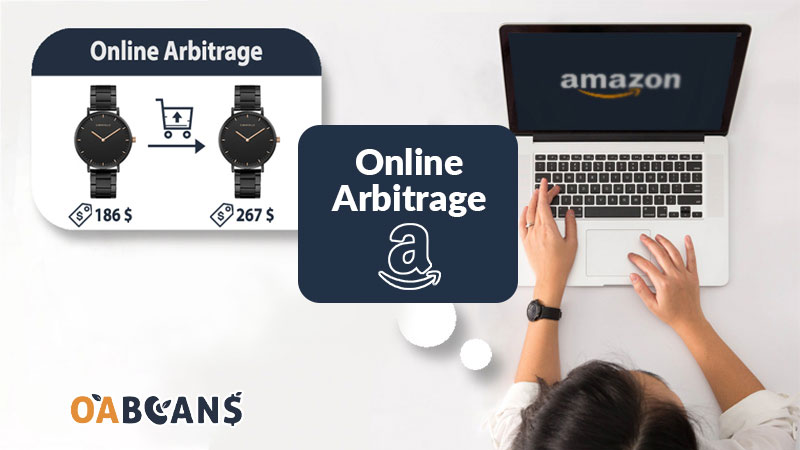
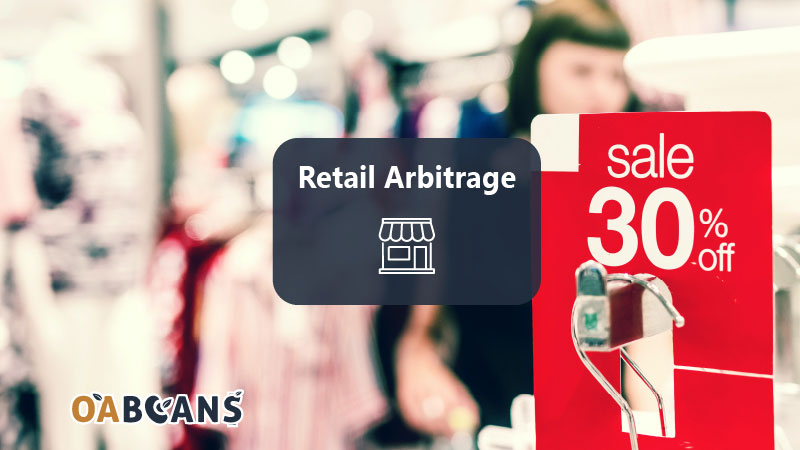
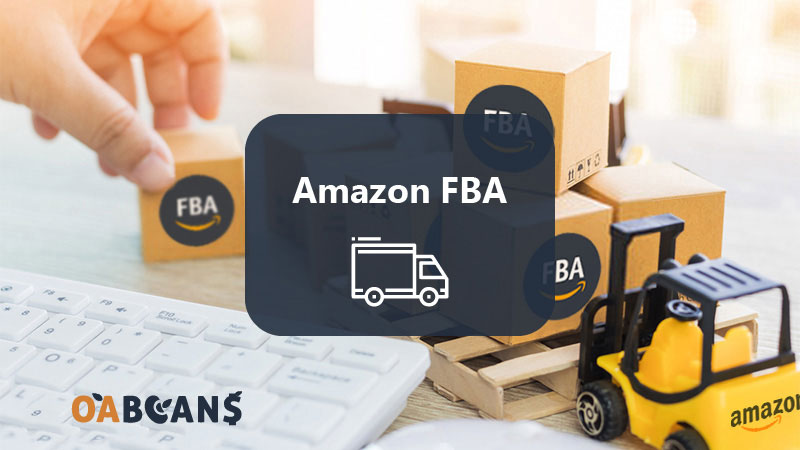

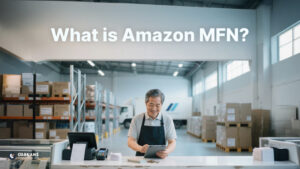


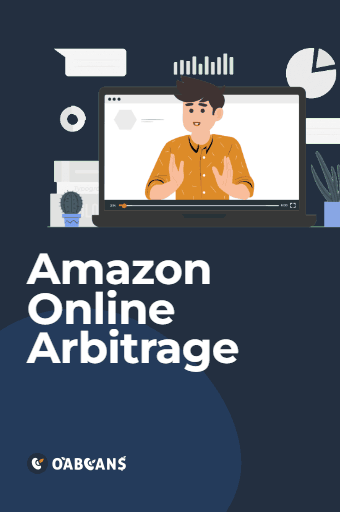

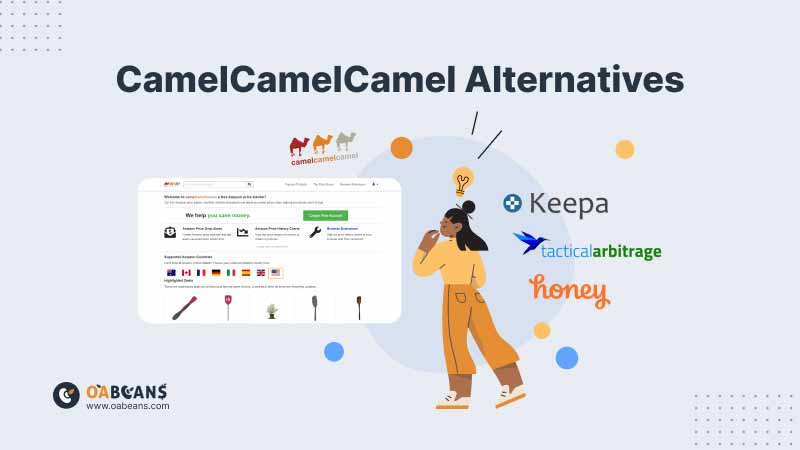
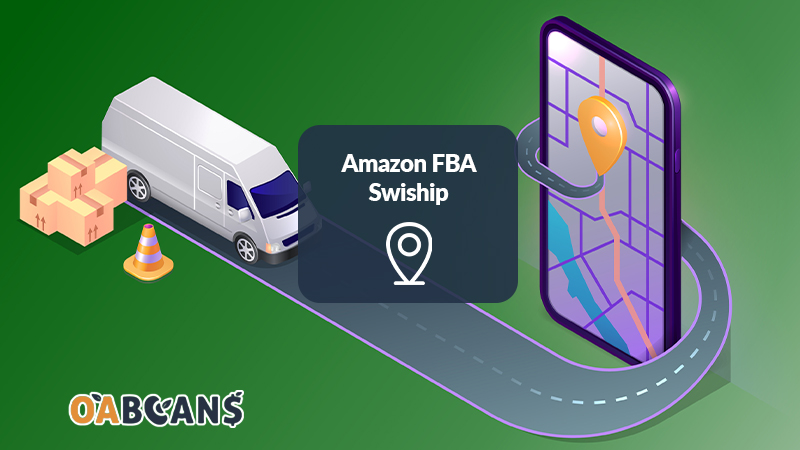
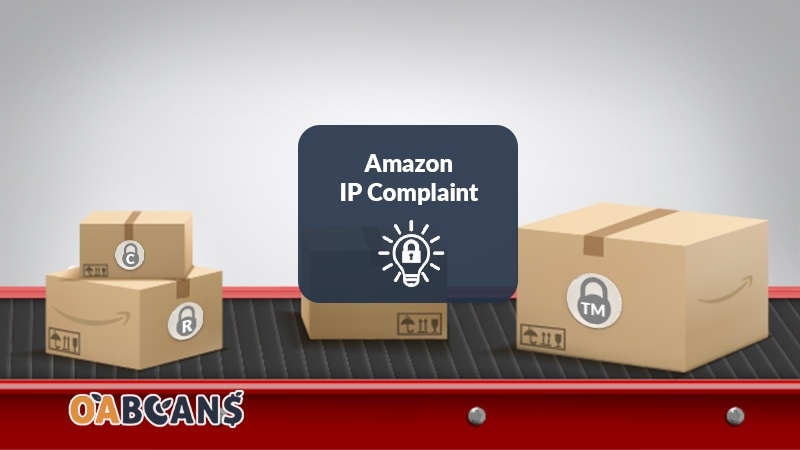
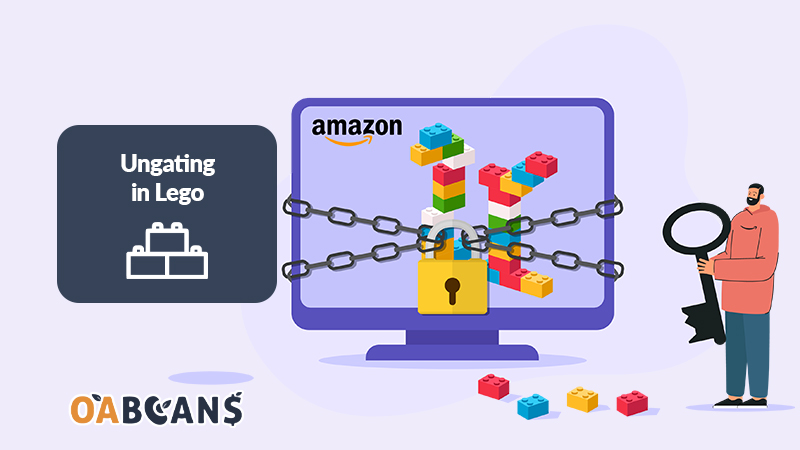
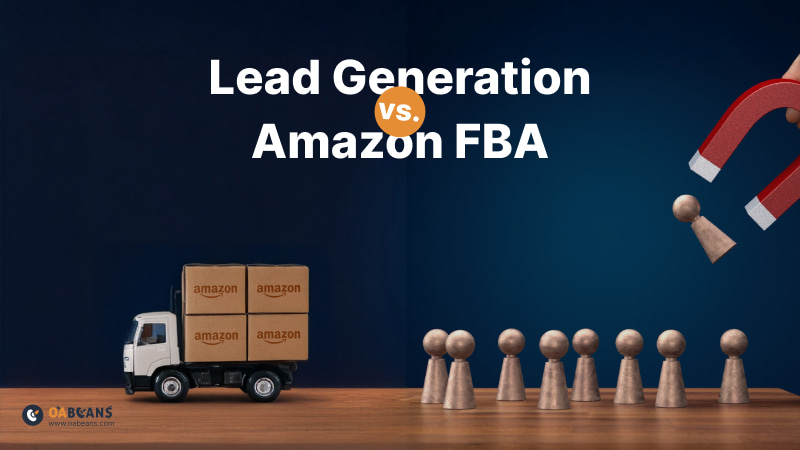




12 replies on “Amazon vs. Alibaba Comparison in 2025”
The FAQs section is particularly helpful. It answers a lot of questions that I had but was too shy to ask.
It is important to have a solid shipping strategy when getting into Amazon online arbitrage, as shipping costs can have a significant impact on profitability.
The forum section of your website is a great resource for sellers to ask questions and get answers from other members of the community.
Your website encompasses everything I need to know about Amazon reselling. It covers practically all aspects of the business and provides insights and tips for succeeding in a highly competitive marketplace.
I appreciate the fact that you cover both basic and advanced topics in Amazon reselling. This is helpful for beginners and veterans alike.
I’m already seeing incredible results from following the advice provided by this site for Amazon online arbitrage.
Amazon’s fulfillment options, such as FBA, provide reliable and efficient shipping solutions for your online arbitrage business.
The success of retail arbitrage on Amazon is based on a combination of effective sourcing, competitive pricing, excellent customer service, and continuous learning and adaptation.
Retail arbitrage on Amazon offers a low barrier to entry, making it accessible to individuals looking to start their own profitable e-commerce venture without significant upfront investment.
Online arbitrage on Amazon offers a low barrier to entry, making it accessible for individuals looking to start their own e-commerce business.
The integration of Amazon with other e-commerce platforms and tools allows you to diversify your sales channels and reach a broader customer base.
Wow Thanks for this page i find it hard to stumble on very good tips out there when it comes to this subject material thank for the site site